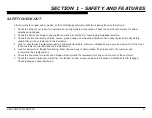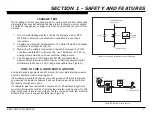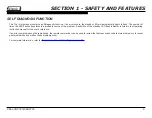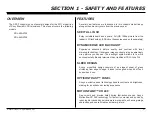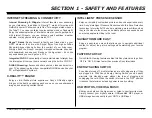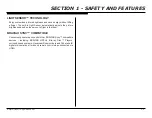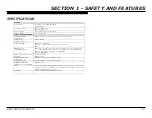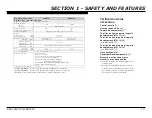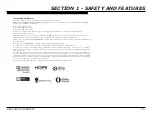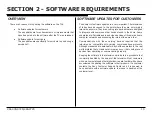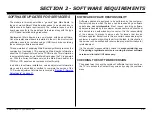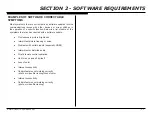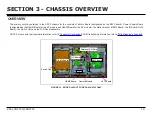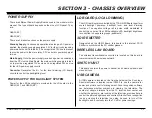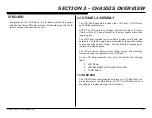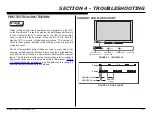
KDL-40NX725/46NX725
20
OVERALL CIRCUIT DESCRIPTION
“Figure 3-3. Overall Block Diagram” on page 23
provides an overview
of the AZ2-F chassis. The following are descriptions of the boards
and their functions.
MAIN BOARD
Common to all models the Main Board, designated as the BATL
Board, contains the TV control, video, and audio processing circuitry.
All these functions are accomplished using the X-Reality Processor
IC9000.
TUNER
The tuner is a combination ATSC/NTSC unit. It can receive traditional
analog NTSC signals via cable or terrestrial along with ATSC digital
signals via terrestrial (8VSB) or cable (64 or 256 QAM).
X-REALITY PROCESSOR
IC9000 performs the majority of the necessary audio and video
processing on the main board.
TV Microprocessor
: The CPU internal to the X-Reality processor
controls all aspects of the television functions. Input from the user
along with monitoring of critical circuits is also performed by this
CPU.
Digital Audio and Video Decoder
: The MPEG2 and Digital Dolby
audio streams are received from the tuner for decompression. All
video sources which are not native 1920 X 1080p 60HZ are scaled to
this resolution. Digital audio content is output to the class D amplifier
for processing and amplification.
HDMI Input and Switching
: The customer can select the HDMI1,
HDMI2, HDMI3, HDMI4 input via the HDMI switch IC5500. Each
HDMI input contains a common EDI NVM (internal to IC5500) to
provide display information data to any device connected via the
HDMI inputs.
LVDS Transmitter
: Integrated into IC9000 is a Low Voltage
Differential Signaling (LVDS) transmitter. This circuit converts
the 8-bit parallel RGB video information into a set of high speed
serial lines for noise-free transmission to the TCON circuits located
internally to the LCD panel.
Scan Converter
: Signal processing circuit that performs resolution
conversion (aspect ratio) and interlaced to progressive scan (IP)
conversion
AUDIO AMPLIFIER
The audio amplifier (IC4601) amplifies the digital audio output of the
X-Reality processor and sends it to the speakers.
TEMPERATURE SENSOR
The temperature sensor detects over-temperature conditions on the
Main Board, LCD Panel, or ambient room temperature and sends
the shutdown signal to the processor.

